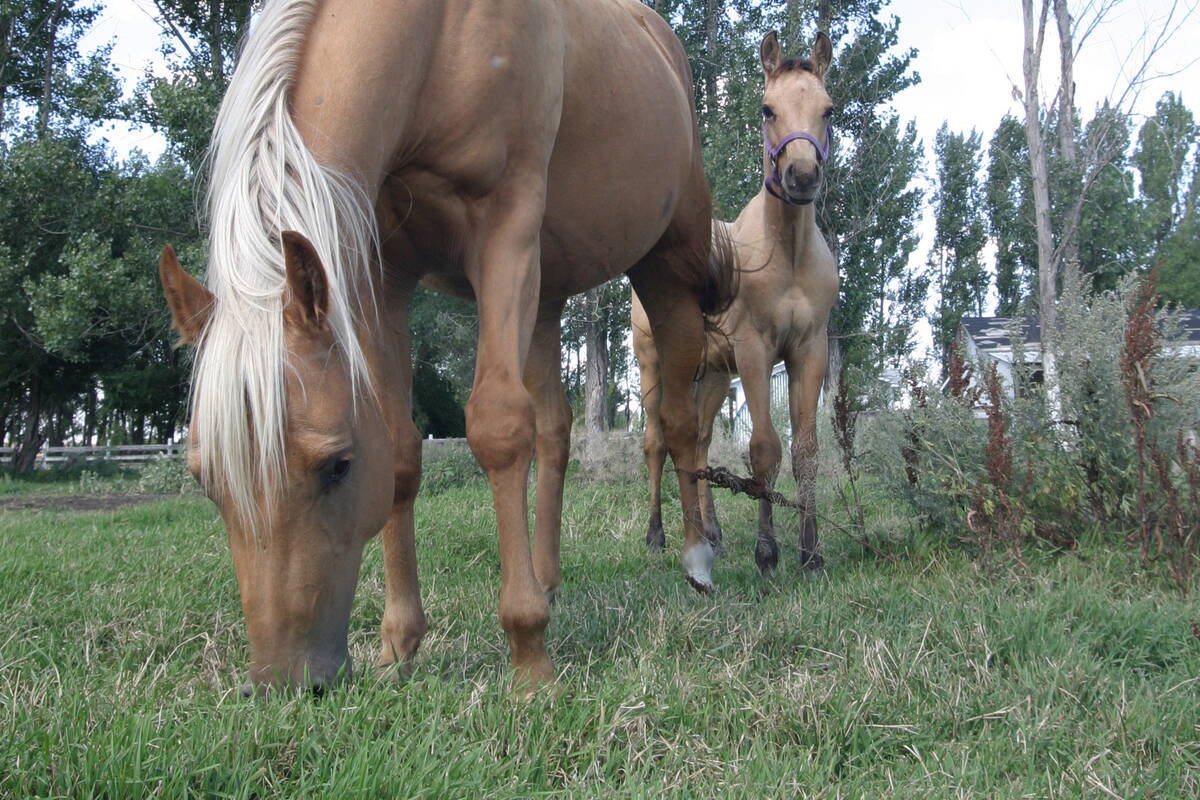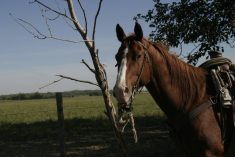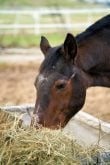Equine professionals, horse owners and caregivers increasingly emphasize the significance of giving horses continual access to long-stem, high-fibre, low-calorie forages.
Interwoven with this ongoing forage availability, however, is another requirement that must be met: the horse’s inherent and almost constant need to move.
Horses operate as grazing athletes. Their innate eating behaviours include a spectrum of actions like seeking, exploring, browsing and grazing. Horses participate in a repetitive cycle of “step, bite, chew, repeat.”
Read Also

Ignoring growth plates sabotages young horse development
Young horse training plans and workloads must match their skeletal development. Failing to plan around growth plates can create lifelong physical problems.
In essence, horses consume while on the move and move while they consume.
Without giving equal emphasis to the steady supply of forage, most horses will struggle to maintain healthy body condition. In their native environment, movement is closely linked to forage consumption, in contrast to many contemporary husbandry programs where horses consume feed without substantial movement beyond the act of chewing.
As a result, gastrointestinal issues such as ulcers and colic, which are often prevented through consistent access to forage, will be replaced by health issues linked to weight gain. These can include laminitis, metabolic disorders and the consequences of an overloaded musculoskeletal system, such as arthritis.
Unfortunately, while movement is essential to proper equine body condition and weight regulation, it often doesn’t get the same attention as other factors.
If the clear connection between movement and healthy body condition isn’t immediately apparent to horse owners and caregivers, there may be a tendency to stress diet modification and enhanced feeding methods. Things such as commercial dietary products, supplements, feeding schedules, slow feeders, muzzles and dry lotting often seem more tangible for many owners. Thus, these aspects tend to come up more often during conversations about managing horse weight.
Misunderstandings can occur, like the misconception that simply restricting feed intake is adequate for weight management.
In the absence of adequate movement, horses may not expend the calories they consume, gradually resulting in weight gain. If horses experience substantial feed limitations, their metabolic systems could paradoxically shift into a conservation mode, stubbornly retaining fat stores.
In the equine industry, marketing efforts often concentrate on promoting processed commercial feed products, supplements and pharmaceutical solutions for weight gain. This can unintentionally divert attention from the essential role of natural activity.
Horse owners might also be influenced by factors such as personal convenience, limitations of their facilities or lack of comprehension about the advantages of incorporating more movement.
Some may assume that providing more movement requires more time and effort compared to changing feeding routines. This viewpoint may downplay the significance of activity when talking about its contributions to horse health, particularly in terms of body condition.
How much is needed?
The extent and nature of movement required to effectively manage body condition can vary based on the animal’s individual metabolism, health condition and daily routine. These different needs can make it difficult to provide one-size-fits-all recommendations.
Understanding the importance of movement in controlling weight requires a deeper understanding of nutrition, equine physiology and horse behaviour. As a result, some individuals find it easier to focus solely on changes to the diet.
Activity may be sidelined due to concerns about a horse’s fitness level, soundness or existing health issues that affect their ability to exercise. However, simple hand walking for 20 minutes would benefit many horses.
Fostering more movement into a horse’s life, even a small amount, will make a difference. A larger amount will make an even bigger difference.
The modern lifestyle of the domestic horse subtly contributes to reduced movement and greater difficulty maintaining natural levels of physical activity.
Key issues include limited turnout, stabling and an emphasis on performance-oriented goals and demanding exercise regimens. These often limit opportunities for natural movement.
Horses may engage in repetitive exercise and monotonous routines that lack variety. This can lead to boredom, decreased motivation and even resistance to movement.
Contemporary feeding practices that revolve around concentrated feeds and supplements can contribute to obesity and metabolic issues, which in turn make movement uncomfortable and contribute to health problems.
When given opportunity, horses have rich social lives and naturally engage in playful interactions, herd activities and travel with their companions. When in isolation or with minimal social contact, their innate motivation to move is dampened.
Mental stimulation and challenges are necessary for horses, as these aspects encourage motion. Without appropriate mental enrichment, they can become lethargic and less inclined to move.
Horses frequently adapt to human schedules and preferences, which can impact the frequency and duration of their natural activity.
Health issues such as pain, lameness and medical conditions can significantly limit a horse’s comfort while moving. These may be the outcome of poor hoof care, improper tack, poor training or lack of veterinary attention.
In today’s world, horses often lead sedentary lives due to their owners’ time limitations, property limitations or lack of awareness about how activity plays into their horse’s physical and mental well-being.
To bridge this gap, it is the responsibility of owners, trainers and equine professionals to acknowledge the vital role of steady natural movement and introduce appropriate changes to a horse’s lifestyle to align with their overall well-being and welfare.
















